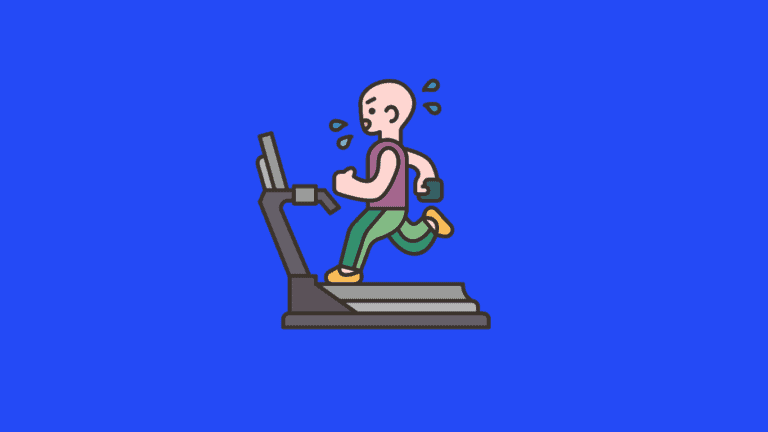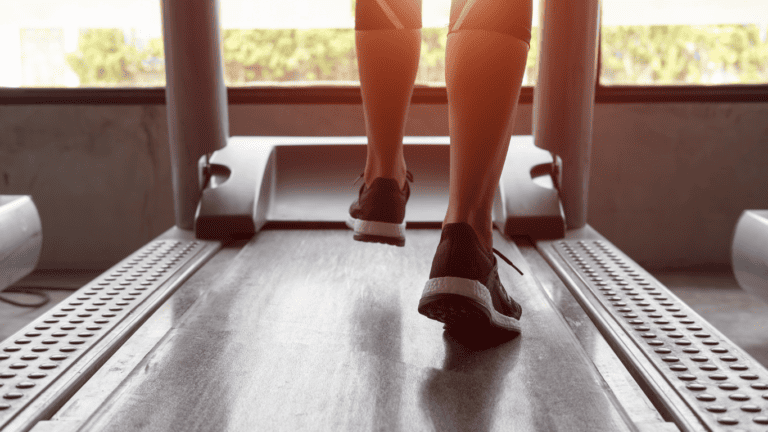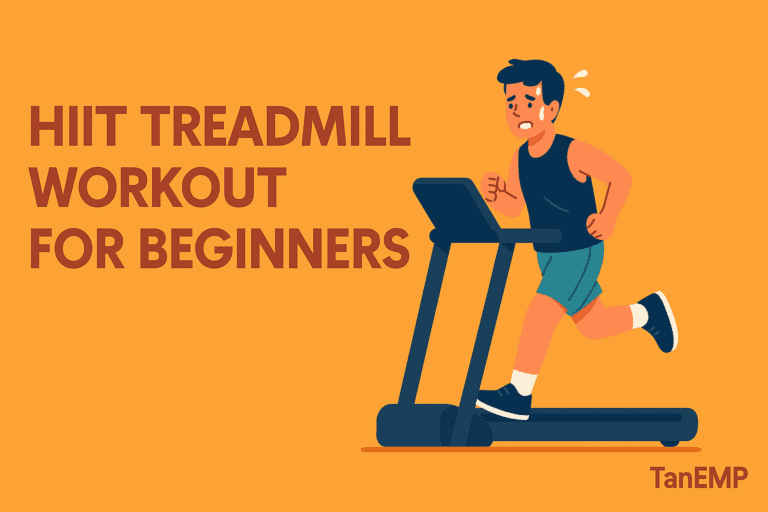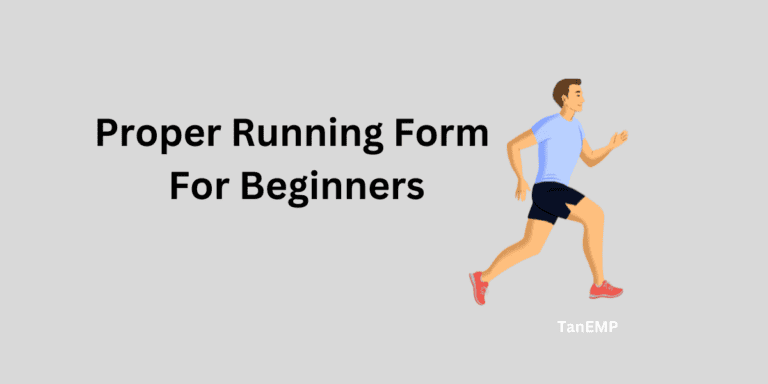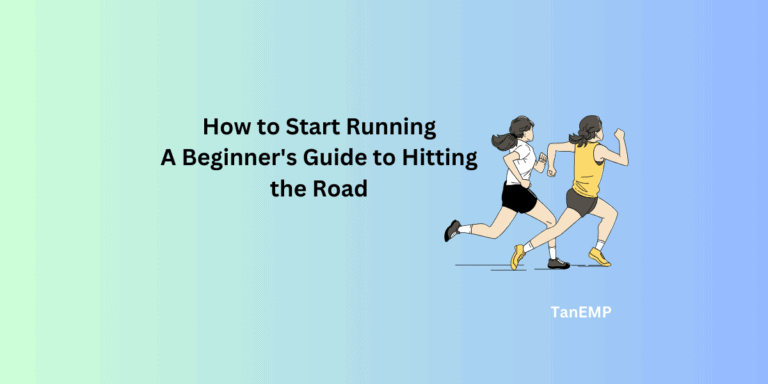How to Run Longer: 9 Simple Steps to Build Endurance for Beginner Runners

Struggling to go beyond 1 or 2 miles without burning out? You’re not the only one.
Most new runners hit this wall a few weeks in. Your lungs hurt, your legs feel heavy, and no matter how motivated you are, your body just won’t cooperate.
As a beginner runner and chiropractor who’s worked with athletes from first-timers to triathletes, I’ve seen the same pattern: it’s not about pushing harder — it’s about training smarter.
This post breaks down 9 beginner-friendly steps to help you run longer, build endurance, and avoid injury. Whether you’re eyeing a 5K or just want to enjoy your runs without stopping every few minutes, these tips will help.
Key Takeaway (TL;DR)
Want a quick snapshot before diving in? These 9 beginner-friendly steps will help you run longer without burning out:
- ✅ Warm up properly – Loosen up muscles and joints before every run.
- 🌬️ Breathe better – Use belly breathing for more oxygen and a steady rhythm.
- 🏃♂️ Fix your form and cadence – Conserve energy and prevent fatigue.
- ⏱️ Try the run-walk method – Build stamina with structured walk breaks.
- 🍌 Fuel and hydrate smart – Eat light carbs, drink water or electrolytes.
- 🏋️♂️ Strength train weekly – Strengthen glutes, hamstrings, and core.
- 🤸 Stretch after your run – Use dynamic stretches for recovery.
- 💤 Prioritize recovery – Rest, sleep, foam roll, and don’t overtrain.
- 👟 Use the right gear – Supportive shoes, moisture-wicking clothes, visibility tools.
9 Steps to Run Longer Without Burning Out
If you’ve been running for a few weeks and want to go farther without feeling drained or risking injury, you’re in the right place. These beginner-friendly tips will help you build endurance safely, one smart step at a time.
1. Start With a Proper Warm-Up
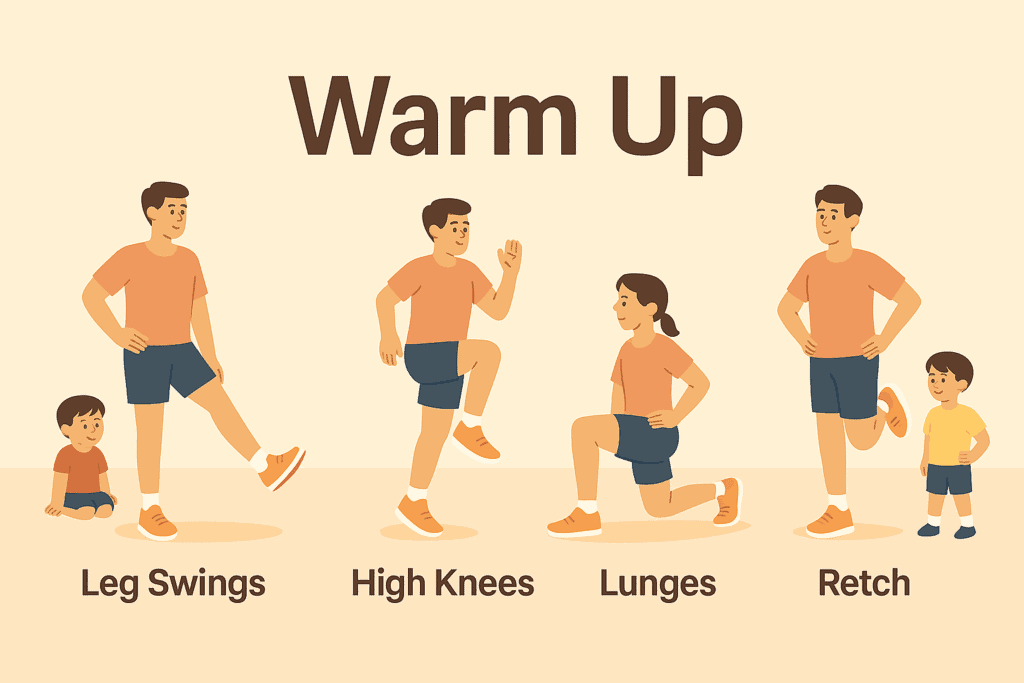
Warming up might feel like a step you can skip — especially if you’re short on time. But a few minutes of movement before your run can make a big difference in how your body performs and feels after.
As a chiropractor who works with runners of all levels, I’ve noticed that many beginners (and even seasoned runners) often dive right into their run without much prep. It’s understandable — life gets busy, or the idea of extra steps sounds like a hassle.
But here’s the thing: after sitting all day or waking up from a full night’s sleep, your muscles are stiff and your joints aren’t quite ready to move efficiently. Giving your body just 5 minutes to loosen up can improve your stride, reduce soreness, and help you run longer more comfortably.
Try a simple warm-up like this (check out the full version here):
- Light marching or jogging in place
- Leg swings (forward/back and side-to-side)
- Arm circles and shoulder rolls
- A few walking lunges or squats
If you usually run in the morning, a good warm-up is even more important — your muscles are coming off hours of stillness. Here’s why morning runs can be helpful, but only if your body is ready to move.
A short warm-up helps your run feel smoother and helps prevent early fatigue. It’s one of the easiest ways to boost performance, without running a single extra step.
2. Focus on Your Breathing
Breathing might seem automatic, but how you breathe makes a big difference when you’re trying to run longer.
Belly breathing (diaphragmatic) is the goal — it allows for deeper oxygen intake, supports your core, and keeps your body steady. Chest breathing is more shallow and leads to faster fatigue because your body gets less oxygen and works harder.
Here’s a quick breakdown:
Belly Breathing ✅ | Chest Breathing ❌ |
|---|---|
More oxygen intake | Less oxygen per breath |
Supports core stability | Tension in mid-back/shoulders |
Matches your running cadence | Often too fast, throwing off the rhythm |
Helps maintain pace | Leads to early fatigue |
Encourages a relaxed form | Increases tightness and effort |
Pro tip: Try syncing your breath to your steps — like inhale for 3 steps, exhale for 2 — and practice belly breathing during walks or warm-ups.
3. Improve Running Form and Cadence to Boost Endurance
If your body’s working harder than it needs to, you’re not going to last long, especially on longer runs.
A good Running form is all about efficiency. When your posture is off, your arms swing too much, or you’re landing too heavily, you burn more energy than you should.
That means more fatigue, less distance, and a lower pace. Small tweaks — like keeping your shoulders relaxed, engaging your core, and landing with a soft midfoot strike — can make a big difference in covering longer distances.
👉 Need help fine-tuning your technique? Check out this beginner’s guide to proper running form.
Then there’s running cadence — how many steps you take per minute.
A cadence that’s too low can cause overstriding, which often leads to injury and early burnout. On the other hand, a cadence that’s too fast can make your heart beat faster and wear you out quickly. This results in poor running efficiency, making it harder to run longer distances.
For most beginners, aiming for a cadence of 160–180 steps per minute is a good starting point. It keeps your stride efficient and helps you conserve energy during longer runs.
👉 Learn how to find and improve your stride in this cadence guide for beginners.
You don’t need to obsess over perfect form or numbers — just know that how you move affects how far you’ll go. Small adjustments now can mean much easier miles later.
4. Use the Run-Walk Method to Build Distance Gradually
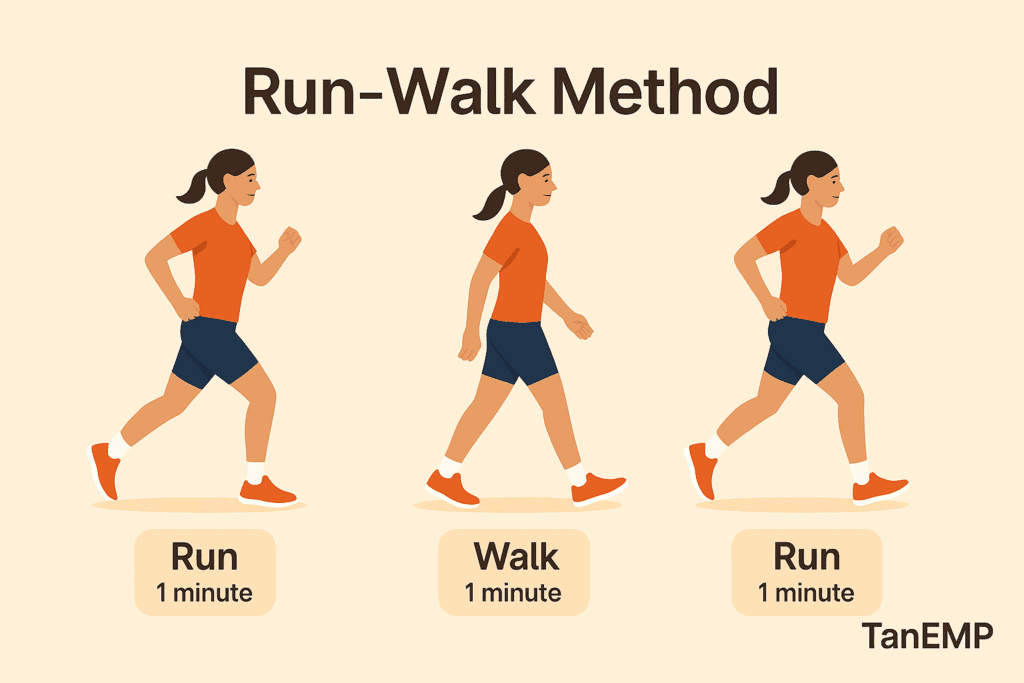
Don’t overlook the run-walk method — especially if you’re still building stamina. While it’s often used by beginner runners, even experienced athletes incorporate it into interval training or recovery weeks to stay consistent without burning out.
Here’s why it works so well:
By alternating short running intervals with walking breaks, you give your muscles and cardiovascular system time to reset. This allows you to cover longer distances without overexerting yourself and reduces the risk of injury from pushing too hard, too soon.
This strategy is especially effective when you’re learning how to run longer. Instead of forcing your body to run the entire time, it gradually builds endurance and teaches your body how to maintain proper form even when tired.
To get started, try running for 1 minute and walking for 1 minute over a 20–30 minute session. As your endurance improves, increase the run time and shorten the walk breaks — a classic interval training structure that works wonders for beginners.
Not sure where to start? Try a structured plan like our Run-Walk Method for Beginners, which shows how to alternate walking and running safely.
Bottom line: The run-walk method is one of the simplest, safest ways to extend your running distance — whether you’re working up to a 5K or coming back from a break.
5. Fuel Your Body and Stay Hydrated

If you want to run longer, it starts with what you put into your body — before, during, and after your run.
Proper nutrition and hydration are key to maintaining energy levels, regulating body temperature, and staying injury-free as you build mileage. A lot of runners don’t realize that feeling sluggish or heavy mid-run isn’t always about fitness — sometimes, it’s just poor fueling.
Here’s how to keep your energy steady and avoid crashing:
- Pre-run meals: Eat light but energizing carbs like a banana, oatmeal, or toast with nut butter.
- Timing matters: Eat about 60–90 minutes before your run so your body has time to digest and absorb the fuel.
- Hydration: Stick with water for shorter distances, but for longer runs or hot weather, electrolytes help prevent cramps and regulate your body temperature.
- Post-run recovery: Don’t skip it. Refuel with a mix of protein and carbs to help muscle recovery and prevent fatigue later in the day.
If you often feel tired after your runs, double-check your nutrition and hydration habits. Many runners underestimate how much this impacts endurance.
A great post-run option? Clear whey isolate — it’s light, refreshing, and easier to digest than traditional protein powders. You can also explore our top clear whey protein recommendations to stay consistent with your recovery.
Nail your fuel and hydration, and you’ll notice your body performs better and recovers faster — one of the simplest steps to running longer and staying injury-free.
6. Add Strength Training to Support Your Runs
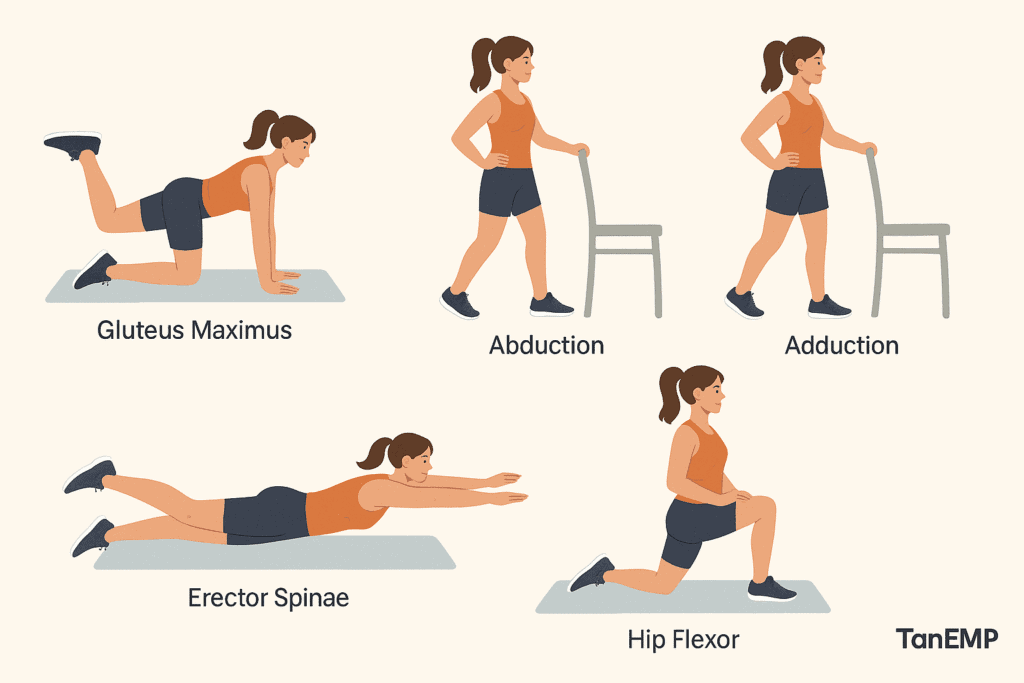
Running longer isn’t just about cardio — your muscles need to pull their weight too.
Strength training is one of the most underrated tools beginner runners can use to build endurance, reduce fatigue, and stay injury-free. Even experienced runners sometimes forget that without strength, they’ll need to put in maximum effort just to maintain a slower pace.
If your muscles can’t handle 30–60 minutes of steady movement, other parts of your body will compensate. That’s when poor mechanics, overuse, and aches creep in.
Ever feel a dull ache in the arch of your foot or the inside of your knee after a long run? That’s often your muscles tapping out, and your form breaking down as a result.
Some of the most commonly weak or easily fatigued muscle groups for new runners include:
- Hamstrings
- Glutes (especially the gluteus maximus)
- Hip flexors and TFL
- Adductors (inner thighs)
- Erector spinae (lower back)
You don’t need to train like a personal trainer or lift heavy weights to see results. Just 15–20 minutes of bodyweight exercises twice a week can go a long way. Try squats, lunges, glute bridges, planks, or even resistance bands.
Looking to strengthen your lower back and improve running posture? Start with these erector spinae exercises.
In short: a little strength work now prevents a lot of problems later, and helps you go farther without burning out.
7. Don’t Skip Static Stretching After Your Run
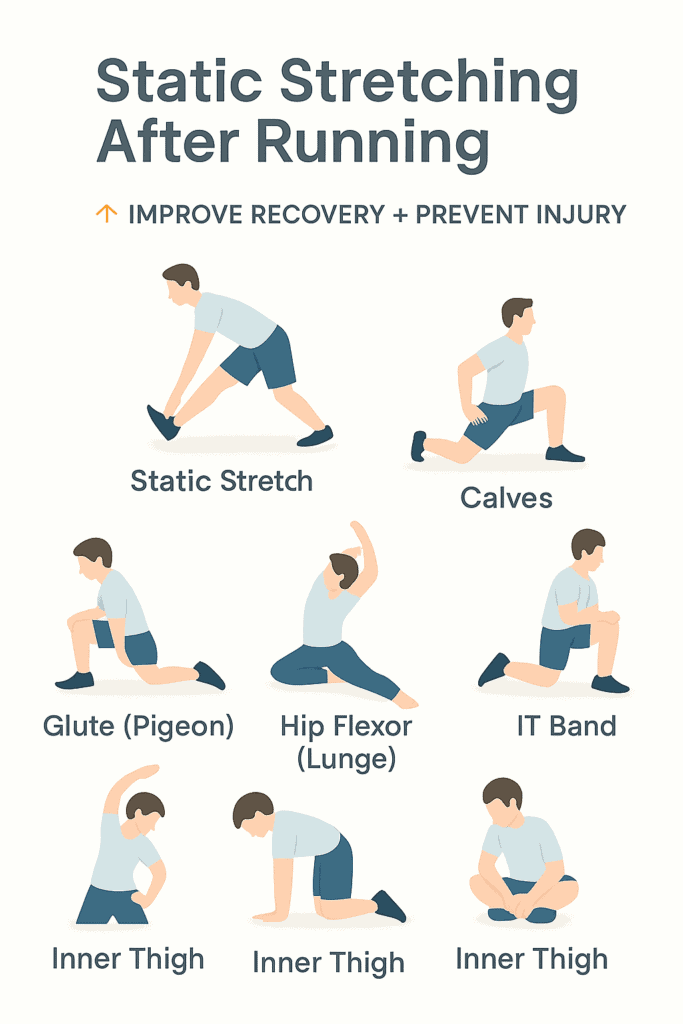
Static stretching is one of the simplest but most overlooked habits for new runners, especially if you’re trying to improve running endurance.
After a run, your muscles are warm and more responsive to stretching. Taking just 5–10 minutes to hold key stretches helps you reduce muscle fatigue, improve flexibility, and recover faster for your next session.
When you skip this, tight muscles can build up tension over time, which may shorten your stride and make your next run feel harder than it needs to be. If your goal is to run longer, staying loose isn’t optional — it’s part of the plan to keep you feeling strong miles ahead.
Here are some effective static stretches to do after a run:
Stretch | Target Muscle | Notes |
|---|---|---|
Standing Hamstring Reach | Hamstrings | Slight knee bend, hold for 20–30 seconds |
Calf Wall Stretch | Calves | Back leg straight, press into the wall |
Pigeon Pose | Glutes | Sit tall, cross one leg forward |
Lunge Hold | Hip Flexors | Deep lunge, hold, and switch sides |
Standing IT Band Stretch | Outer thigh/IT Band | Cross your legs and reach over |
Cat & Cow | Erector Spinae | Do slowly on all fours (best done at home) |
Seated Butterfly Stretch | Adductors | Soles together, press knees toward the floor |
Hold each stretch for 20–30 seconds, breathing slowly. You don’t need to be super flexible — just consistent. Over time, this habit can help reduce post-run soreness and support a smoother stride.
Want more info? Check out our post on static vs. dynamic stretching to learn when and how to use each style effectively.
8. Prioritize Recovery — It’s Part of the Training
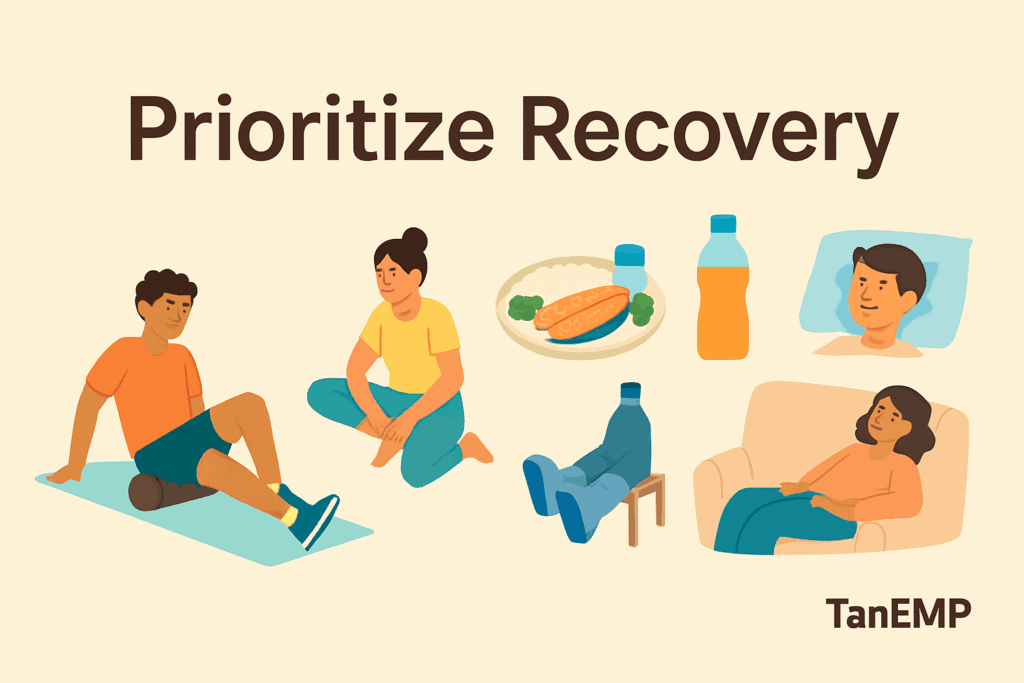
When it comes to running longer, recovery isn’t a luxury — it’s a requirement.
But oddly enough, it’s the most skipped step in most runners’ routines. New runners often overlook it, and running enthusiasts push through soreness, thinking that more miles equal better results. The truth? You only improve from the work you recover from.
As a chiropractor, I work with many marathoners who come in weekly as their races approach. Not because they’re injured, but because they know their body performs best when their muscles aren’t overtrained or locked up.
Here are some easy and effective recovery tips you can start using right now — no race bib required:
- 🌚 Rest days — schedule them in, don’t skip them
- ♻️ Dynamic stretching after every run
- 🏋️ Foam rolling or massage gun use (just 5 minutes helps)
- ⚡ TENS/e-stim machines for targeted soreness
- 🍽️ Recovery meals — protein + carbs, plus supplements like clear whey
- 🎤 Compression boots or socks to improve circulation
- 🛌 Sleep — aim for 7–9 hours
Want more tips? Here’s how to speed up muscle strain recovery and improve your overall recovery routine.
9. Choose the Right Gear
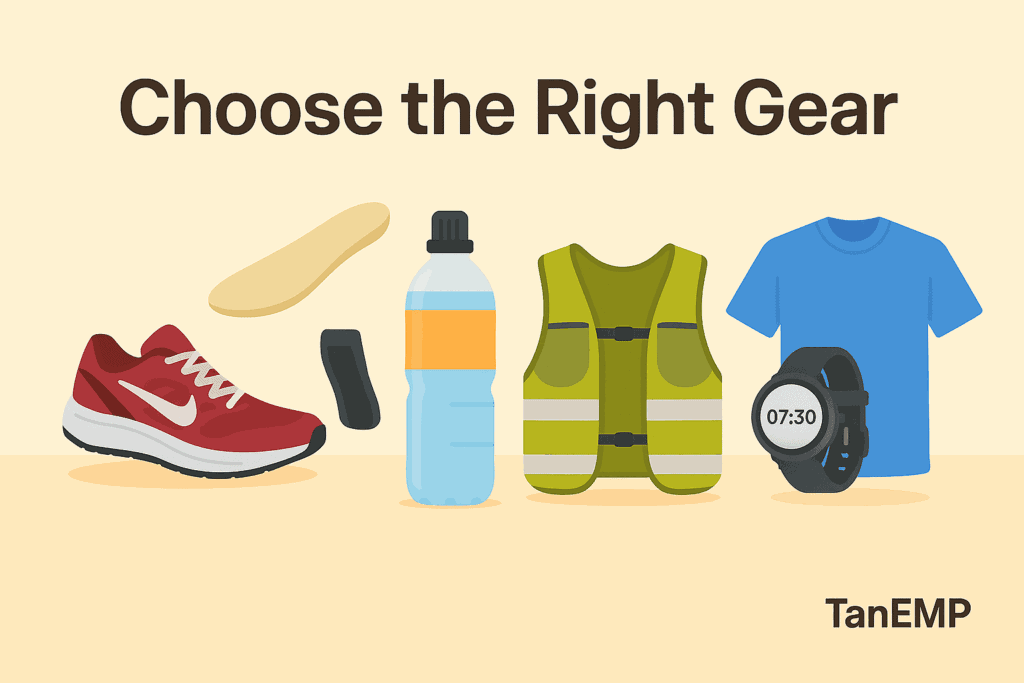
The right gear won’t magically make you a pro, but it does make a huge difference when you’re trying to run longer, stay comfortable, and even run faster.
Poorly fitted shoes, heavy clothes, or overheating can drain your energy — and your mental stamina — before you even hit your stride. The more distance you cover, the more important comfort and function become.
Here’s a quick checklist of gear to support your endurance goals:
- 👟 Running shoes – The right shoes matter most. Pick ones that match your foot type and running surface. For example, check out these treadmill running shoes if you’re training indoors.
- 👣 Insoles – If you have flat feet or frequent arch fatigue, inserts can add the support you need for longer efforts.
- 🧦 Compression socks – Help reduce calf fatigue and boost post-run recovery.
- 💧 Hydration vest or handheld bottle – Perfect for longer outdoor runs or hot weather training.
- 🕶️ Reflective gear – Essential for safety if you run early mornings or after sunset. Here’s how to stay visible at night.
- 👕 Moisture-wicking clothing – Keeps you cooler and reduces the risk of chafing or overheating.
- ⌚ GPS watch or running app – Helps you track running distance, pace, and cadence to measure progress without constantly checking your phone.
You don’t need to buy everything up front. But starting with the basics — especially well-fitted shoes and breathable clothing — can help you stay focused on your run, rather than being distracted.
Gear won’t replace smart training, but it can support your efforts, help you stay consistent, and boost confidence every mile of the way.
Listen to Your Body When It Comes to Running Longer
If you want to run longer, your body has to stay healthy, and that starts by paying attention.
Tired legs, soreness, or low energy are signs to rest. Ignoring them only leads to setbacks.
If you feel great, that’s your green light. But if something feels off, ease up or seek help. Smart runners adjust early.
Wrap Up
Running longer isn’t about pushing harder every time. It’s about building smart habits — from warming up and improving form to fueling right, strength training, and giving your body the recovery it needs.
As someone who’s both a beginner runner and a chiropractor, I’ve seen how small changes can lead to big progress — if you give them time.
And remember: don’t run too much or too fast right off the bat. You’re not falling behind if your progress feels slower than others. You’re laying a solid foundation — not just for one race, but for the long run ahead.
Stick to the basics, trust your running journey, and keep showing up — you’ll be surprised how far you can go.
This content is based on my personal experience as a beginner runner and chiropractor. It is for informational purposes only and should not be taken as medical advice. If you have pain while running or any medical concerns, please consult with your healthcare provider before starting any new exercise program.
🧠 FAQs: How to Run Longer
1. How do I increase my running distance without burning out?
Start by slowly increasing your weekly mileage and following a realistic training schedule that includes low-intensity runs, rest days, and cross-training. Don’t rush the process — consistency is more important than speed. The run-walk method is also a smart tool for improving endurance without risking injury or burnout.
2. Should I run the entire distance or take walk breaks?
It’s totally okay not to run the entire distance, especially as a beginner. The run-walk method is a proven way to build stamina without overtraining. Over time, your running intervals will naturally get longer.
3. Is cross-training helpful for running longer?
Yes! Cross-training, like swimming, cycling, or even walking, gives your legs a break while boosting cardio fitness. It’s a great way to improve endurance without adding impact, and helps prevent overuse injuries from just running alone.
4. Do I need speed work to improve my endurance?
While speed work isn’t essential right away, it can help once you’ve built a base. Intervals or tempo runs improve efficiency and make longer runs feel easier. Just make sure you’re not skipping your easy runs or recovery days in the process.
5. What’s the best beginner training plan to run longer safely?
Look for a plan that includes:
3–4 running days
1–2 cross-training or rest days
A long run that gradually increases distance
Flexibility for busy schedules
Consistency is more important than perfection. Focus on building habits first, then add volume.
